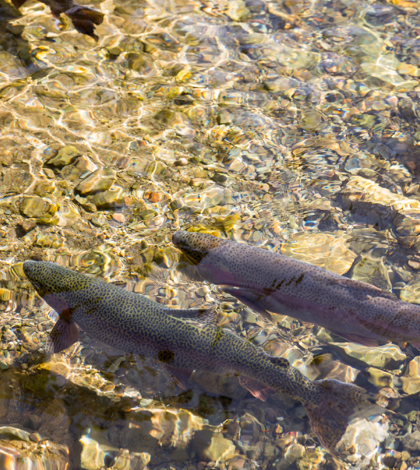The battle to aid the endangered Chinook salmon in the Sacramento River has spawned a number of attempts to both protect the existing fish and to provide safe habitats for recently hatched fingerlings from predator fish. Most attempts have provided some benefit for the species but the problem of increasing the number of salmon in the river persists.
A new approach, however, in concert with existing efforts, may provide some relief in this decades-old battle now complicated by California’s ongoing drought. Federal, state and local authorities along with fisheries officials recently gathered at the Anderson-Cottonwood Irrigation District Diversion Dam in Redding to review existing, joint efforts – and to hear of a new approach — to aid in increasing the Chinook salmon in the Sacramento River.
According to the Redding Record Searchlight, agencies are doing many things to help the salmon, said Dave Vogel, a senior scientist with Natural Resource Scientists Inc. of Red Bluff, CA. Realizing the need for multiple, simultaneous efforts was Vogel’s primary message.
“We’re not trying to find the silver bullet because frankly a silver bullet doesn’t exist. It’s cumulative,” Vogel told a group of about 30 public officials gathered on the banks of the Sacramento River in Redding on Wednesday to hear about the Sacramento Valley Salmon Recovery Program.
But alongside the existing cumulative efforts, the Sacramento Valley Salmon Recovery Program is reporting new projects to aid the salmon. These include floodplain restoration, the creation of side channel spawning and rearing areas, the addition of habitat structures ad spawning gravel, as well as innovative projects to create rearing habitat in rice fields. They indicate that these habitat improvements projects are priorities on the Sacramento River and its tributaries for both adult salmon holding and spawning, along with juvenile salmon rearing.
Specifically discussed at the recent diversion dam meeting was the intention to begin building side channels to provide recently hatched fingerlings a secure place to live before migrating to the ocean. Vogel reports that the side channels provide safety for the newly hatched fish – safety away from predators and the swift water they typically experience in the rivers.
Inasmuch as 90 percent of the winter-run salmon originate in and around Redding, the first side channel has recently been built along the Redding area. U.S. Bureau of Reclamation Fisheries Biologist John Hannan shared with the public representatives present that some 12 side channels are to be constructed between Redding and Red Bluff.
The president of the Northern California Water Association David Guy summed it up succinctly when he pointed out the obvious issue tied to successes in effort to save the salmon and to increase the habitat to foster an increase in spawning. Guy simply shared that if the salmon are struggling, water users face more restrictions.
Further commentary on the situation appeared on the Northern California Water Association blog when it stated that the discussion in Redding is a, “…truly unique approach to water management for multiple beneficial uses and … part of a larger, ongoing conversation about what can be done by all involved to carry out the efforts to benefit salmon.”
 California Water News Daily Your Source For Water News in California
California Water News Daily Your Source For Water News in California


